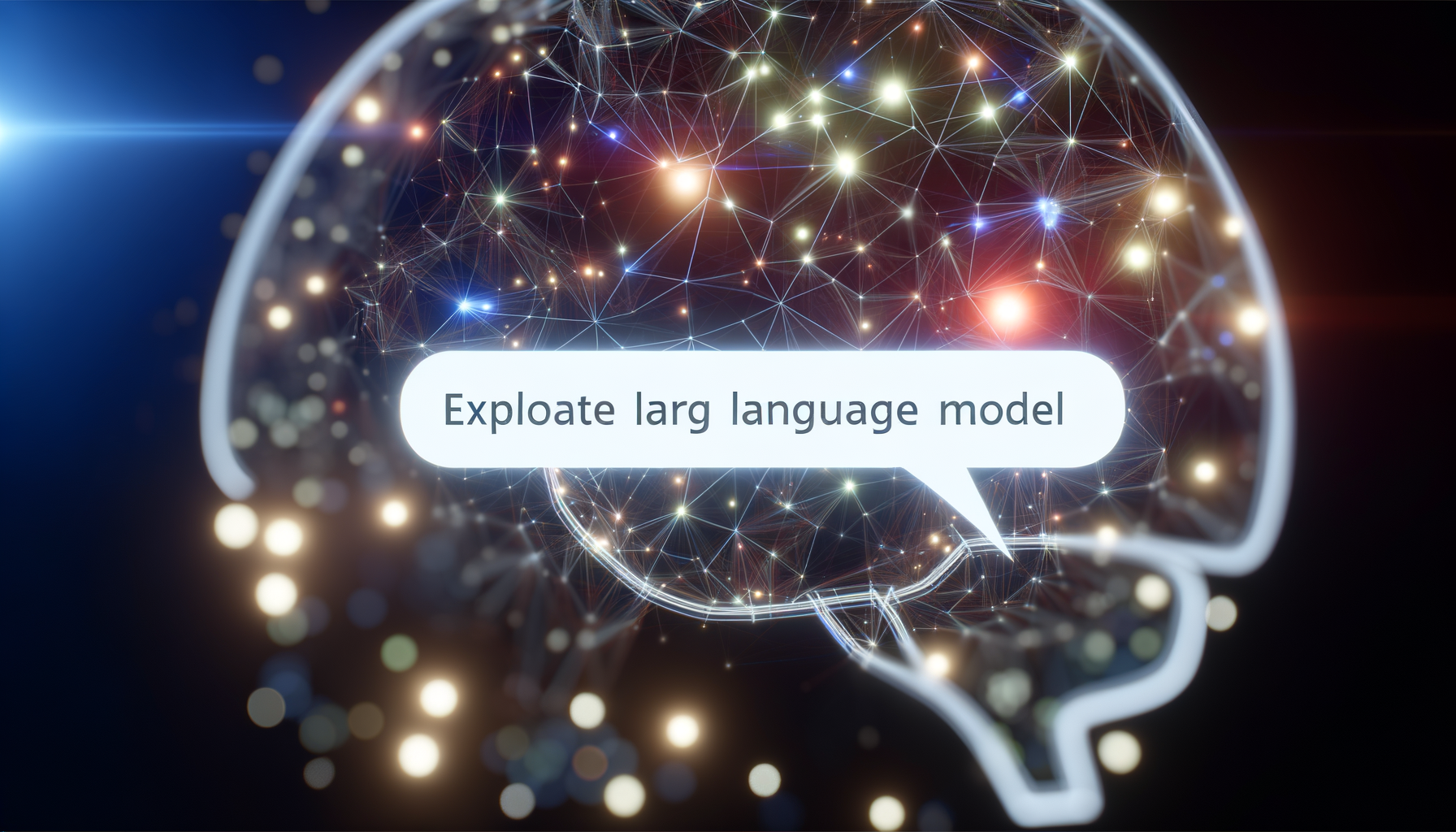Ever wondered how AI thinks and processes information? This article unveils the intricate workings of Large Language Models (LLMs), offering a deep dive into their thought processes, challenges, and the future of AI cognition. Join us in exploring the digital minds that are reshaping our world.
The Anatomy of Thought in AI
Tracing the thoughts of a Large Language Model (LLM) such as GPT reveals a fascinating journey through a complex web of neural network layers and processes. At its core, an LLM’s ability to simulate thought and generate human-like text is anchored in its architecture, which is comprised mainly of what are known as transformer models. These transformers are designed to process input data, in this case, text, by weighing the significance of each word or phrase in relation to others within a dataset, thus simulating a form of ‘understanding’.
Each layer within the neural network can be seen as a filter, refining and reshaping the input data, extracting patterns, and learning from context. The depth of these layers plays a crucial role in the LLM’s ability to process complex linguistic structures and generate coherent, nuanced text. Moreover, the training data fed into these models significantly influences their ‘thought’ processes. High-quality, diverse datasets enable the model to learn a wide range of language patterns, idioms, and cultural nuances, thereby enhancing its capability to produce more accurate and contextually relevant responses.
The interplay between the structure of the LLMs, characterized by their multi-layered transformers, and the quality of the training data, directly impacts the sophistication and accuracy of the AI’s ‘thoughts’. Through this complex structure, LLMs like GPT are not just imitating human thought but are simulating a form of digital cognition, making them powerful tools for understanding and generating human language.
Decoding AI Logic
Building upon the foundational elements of AI thought processes discussed earlier, we delve into the complex mechanisms that direct these processes towards generating responses. At the heart of a large language model’s (LLM’s) ability to simulate thought and produce coherent text lies the intricate interplay of attention mechanisms and transformers. These components guide the flow of data and decision-making within an LLM, enabling it to prioritize certain inputs over others and thus, shape its responses based on relevance and context.
Attention mechanisms allow the model to focus on different parts of the input text when producing an output, mimicking the human ability to pay attention to relevant details while ignoring others. This capability is crucial for understanding and generating language that is contextually appropriate. Transformers, on the other hand, facilitate the parallel processing of sequences, significantly enhancing the efficiency and depth with which LLMs can analyze and generate text. Together, these mechanisms create a dynamic flow of information, allowing the AI to weigh and integrate various factors before producing a response.
Several case studies have attempted to visualize this process, offering insights into the “thought paths” an AI takes. For instance, by tracing the activation patterns in a model like GPT-3, researchers can visualize how different layers and nodes within the model react to specific inputs, illuminating the decision nodes and pathways that lead to a particular output. Such visualizations not only demystify the inner workings of AI but also enable developers to identify and address potential biases or errors in the decision-making process, setting the stage for the next topic of exploration: the phenomenon of AI “hallucinations” and the challenges they present in ensuring the reliability of AI-generated content.
Challenges and Hallucinations
Building on our understanding from the exploration of AI’s logical pathways and decision-making processes, we delve into the phenomenon known as “hallucinations” in large language models (LLMs). These instances, where AI generates factually inaccurate or nonsensical responses, may seem at odds with the sophisticated decision nodes and pathways previously discussed. The root causes of these hallucinations often stem from limitations in the AI’s training data and the inherent complexities of natural language understanding. Unlike humans, AI lacks the real-world experience and intuitive grasp of context, leading to errors when interpolating between the vast datasets it was trained on.
Researchers are actively developing methods to mitigate such hallucinations, aiming to refine the reliability of AI-generated content. Techniques involve enhancing the quality and diversity of training data, implementing more sophisticated attention mechanisms that can better grasp the nuances of context, and introducing feedback loops where the model’s outputs are continually assessed and corrected, allowing the system to learn from its mistakes. As we pivot to the future of AI cognition in the next chapter, these ongoing efforts to reduce hallucinations are crucial. They not only improve the accuracy of AI responses but also pave the way for more advanced models that can simulate human-like thinking and creativity more effectively, by understanding and replicating the complex web of human knowledge and intuition with greater fidelity.
The Future of AI Cognition
Building on the understanding of AI’s ‘hallucinations,’ the future of AI cognition lies in the potential for transformative advances in neural network design, training methodologies, and the processing of vast datasets. Innovations are expected to significantly enhance AI’s ability to simulate human-like thinking and creativity. One promising direction is the development of dynamic neural networks that can adapt their structure based on the task, mimicking human cognitive flexibility. This would enable AI to more effectively process ambiguous or complex information, akin to human problem-solving capabilities.
Furthermore, the integration of more robust models for emotional intelligence within AI systems could lead to advancements in natural interaction, allowing AI to better understand and react to human emotions. Enhanced training methods that involve larger, more diverse datasets can provide AI with a broader understanding of human culture and values, enriching its ability to generate more nuanced and contextually relevant responses.
Another critical area of exploration is the incorporation of mechanisms for ethical reasoning and moral judgment, equipping AI with the capability to navigate complex ethical dilemmas in a manner similar to humans. These innovations, encompassing deeper and more flexible thought processes, promise to elevate AI from tools of convenience to partners capable of collaborative and creative thinking, pushing the boundaries of what AI can achieve in the next generation of applications.
Conclusions
Throughout this exploration, we’ve delved into the mechanisms that enable AI to ‘think’ and respond. We’ve uncovered the challenges they face, such as hallucinations, and looked towards a future where AI cognition is even more advanced. Understanding AI’s thought patterns not only demystifies its workings but also guides us in responsibly harnessing this potent technology.







